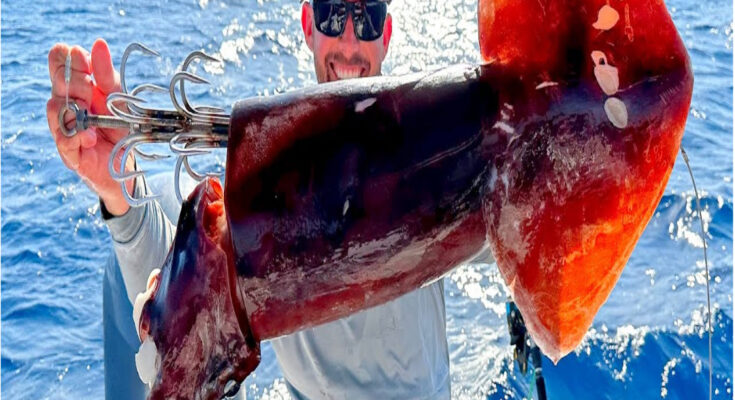Using a huge squid as bait for fishing is a strategy aimed at attracting larger predatory fish that feed on squid. This tactic is often employed in deep-sea or offshore fishing where big game fish like marlin, tuna, swordfish, or sharks are targeted.
Here are some key points about using huge squid as bait:
1. **Attracting Larger Fish**: Predatory fish are attracted to large prey items like squid because they provide a substantial meal. The scent and movement of the squid in the water can draw in these big game fish.
2. **Preparation**: Typically, the squid used as bait is large enough to be noticeable and appealing to the target fish species. It might be rigged whole or in chunks, depending on the fishing technique and the specific fish being targeted.
3. **Rigging**: Rigging involves securely attaching the squid to the hook and ensuring it stays intact during casting and while in the water. This might involve using strong fishing line, multiple hooks, or specialized rigs to handle the weight and size of the squid.
4. **Techniques**: Fishing with a huge squid as bait often involves trolling or drifting, depending on the fishing location and target species. The bait is presented at various depths to maximize its visibility and attractiveness to the larger fish.
5. **Safety and Equipment**: Handling and using large squid as bait requires proper equipment and precautions due to their size and potential for messiness. Anglers should be equipped with gloves and tools for handling squid safely.
6. **Regulations**: Depending on the region and fish species, there may be regulations regarding the use of certain baits like squid. It’s important for anglers to be aware of and comply with local fishing regulations.
Overall, fishing with a huge squid as bait can be an effective strategy for targeting larger fish species that feed on squid. It requires careful preparation, proper rigging, and knowledge of fishing techniques suited to the target species and fishing environment.



